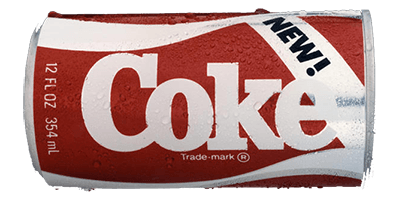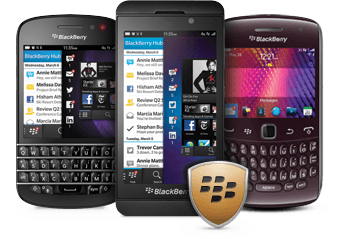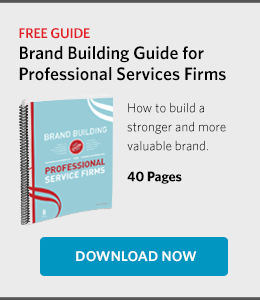Brand failure is all over the news these days — from Volkswagen’s diesel disaster to Donald Trump’s serial bankruptcies. Businesses old and new fall on hard times, make mistakes, rise and fall. It’s the story of business. But if you are savvy, you can learn for others’ mistakes.
At the end of this article, we’ll give you few prescriptions to extend the life of your brand. But first, let’s observe a moment of silence and remember a few cautionary tales from the recent past.
Why Do Brands Fail?
Not every brand is a success. Some disappear in an instant — where are US Airways, Blockbuster, and Borders today? Others like Kmart and Oldsmobile, simply grow old and tired. A few businesses collapse from moral decay (Enron and Lehman Brothers). And many, many brands never achieve success because they can’t compete in a crowded marketplace. So let’s see what we can learn from four once-mighty brands that have failed.
Fallen Angels
For almost 80 years, Arthur Andersen, the former Big Five accounting firm, built its reputation on honesty and impeccable standards. The company’s former motto, “Think straight, talk straight,” defined the firm’s style and convictions. But by the 1990s, the firm had lost its way. Their guiding principles vanished in a flash of irrational exuberance and greed. And mountains of shredded documents couldn’t hide the firm’s entanglement in energy giant Enron’s ethical wrongdoings.

In a spectacular fall from grace, a name that had once defined trust and business ideals became synonymous with corruption. Corporations that had once hired Andersen for its sterling reputation couldn’t run away fast enough. In a matter of months, the Andersen brand had all but vanished.
Sweet Success?

In 1985, the Coca-Cola Company made one of the most famous brand blunders in history. Archrival Pepsi was gaining market share. Pepsi had positioned itself as the “young” brand and proclaimed itself the best tasting cola. Meanwhile, Coke’s market share had dwindled to an all-time low. Coke needed to take action. In blind taste tests, a sweeter version of the company’s flagship drink actually outperformed Coke and Pepsi. So in a spasm of logic, the world’s number one brand rolled out a reformulated version of its flagship beverage: New Coke.
What the company didn’t understand, of course, was that Coke was not about taste at all. In fact, the brand is built on people’s emotional attachment to something iconic and eternal. In the minds of loyal customers, “New” Coke was no longer Coke at all. Instead, it had become something inauthentic, not “The Real Thing” of their childhood. New Coke was such a colossal failure that in less than three months it was yanked from shelves and replaced with the reassuring familiar taste of Coke Classic.
(I know, I know. Coke is still around and doing just fine, thank you. But it’s a testament to the strength of its brand that Coke was able to bounce back from such a mistake. The company had fundamentally misunderstood its brand promise: that Coca-Cola is the very image of tradition and Americana. They should have known that in the sepia-tinted drugstore that is their brand, there is no room for New.)
Blackberry Jam
In 2008, Research in Motion — the company behind the Blackberry smartphone — was worth over $83 billion. Today, the company (now called Blackberry Ltd) is valued at well under $4 billion. What happened?

The maker of the once-ubiquitous phones fell victim to two forces:
- The hubris of a market leader that was at the top of its game.
- The surprise emergence of a disruptive technology from outside the industry.
When Apple introduced the iPhone in 2007 the mobile phone industry dismissed the product as a flash in the pan. In fact, that flash blew up an entire industry. Soon thereafter, when Google introduced the Android operating system for free to handset makers, the situation became much clearer. Today, iOS and Android command 96% of the mobile operating system market.
Blackberry is now trying to reposition itself as a software and services company. It may experience some modest success because of its history of providing secure communications to government and industry. But its days of dominance are probably over.
Exit Taxi?

In 2011, a company called Uber Technologies launched its mobile-app-based ride service in San Francisco. Just 4 years later, the company (known simply as “Uber”) has taken the world by storm. Today the company is valued at $50 billion and operates in 58 countries. The big losers? Taxi companies, of course. In New York City alone, dozens of taxi companies have filed for bankruptcy, many citing Uber as a primary cause. And in the heart of Manhattan Uber is already taking millions of rides away from traditional yellow taxis.
Why? Uber offers the convenience of calling and paying for a ride entirely through their mobile app — no cash, no credit cards, no tips as you leave the car. The vehicles tend to be newer and the fares are often cheaper (though not always). Cab companies have little flexibility to adapt to these market changes, as the taxi industry is heavily regulated and, to some degree, unionized. If Uber is able to fend off regulation, government bans, and debilitating law suits, the taxi industry is in serious trouble. The next few years will tell. Will taxis go the way of the Edsel? Maybe not. But they may be headed for an unpleasant crash.

So why do brands fail? As these examples illustrate, brands disintegrate for all kinds of reasons. They fall victim to changing tastes, new innovations, lost trust, and bad decisions.
SEE ALSO: Top 10 Branding Tools
But as you consider your own brand, remember this: if you can’t make an emotional connection with your customer, you’ll never attain the heights that these companies achieved. You’ll never inspire a loyal following or become an icon of industry. To get there, you have to build your reputation and visibility. And avoid a big mistake.
6 Ways to Avoid Brand Failure
- You can’t really control your brand (though you can influence it). Your brand is created not in the boardroom but in the minds of your customers. So listen to what they have to say and build on your strengths. You’ll never succeed if you try to be something else.
- Don’t water down your brand. If you are known for a particular service or product, resist the natural urge to expand your offerings. You are almost always better served by narrowing your focus.
- Take an honest look at your market. Are you just another face in the crowd? You can only build a loyal following if people notice you. Make sure you offer something fresh so that your business will stand out in the crowd. Think of ways you can differentiate your business, whether it’s your products, the way you talk about yourself, or the way you present yourself visually in the marketplace.
- Make your employees living brand ambassadors. If they are enthusiastic about your brand, your clients will be, too.
- The world is filled with marketing chatter. Simplify your message so that people quickly can grasp what you do and how you are different. If your brand is relevant, clearly communicated, and memorable, you are on the right track.
- Evolve with the times. It has worked for tech giants IBM and Xerox: in the face of cheap Asian competition, both changed their focus from the products and hardware they were known for to sophisticated business services. If you decide you can’t beat ‘em, don’t join them! Instead, do something else at which you can win.
Additional Resources
- Develop a stronger and more valuable brand with Hinge's Brand Building Guide for Professional Services Firms.
- Create a well-differentiated brand with our free Differentiation Guide for Professional Services Firms.
- Download a free copy of the book Inside the Buyer's Brain to learn how to build a powerful brand to help your firm close more sales.
How Hinge Can Help
The best brand building strategies help your firm connect with its buyers, builds your reputation, and increases you marketplace visibility. Hinge's Branding Program can help your firm stand out from the competition and build a brand that drives sustained growth.


